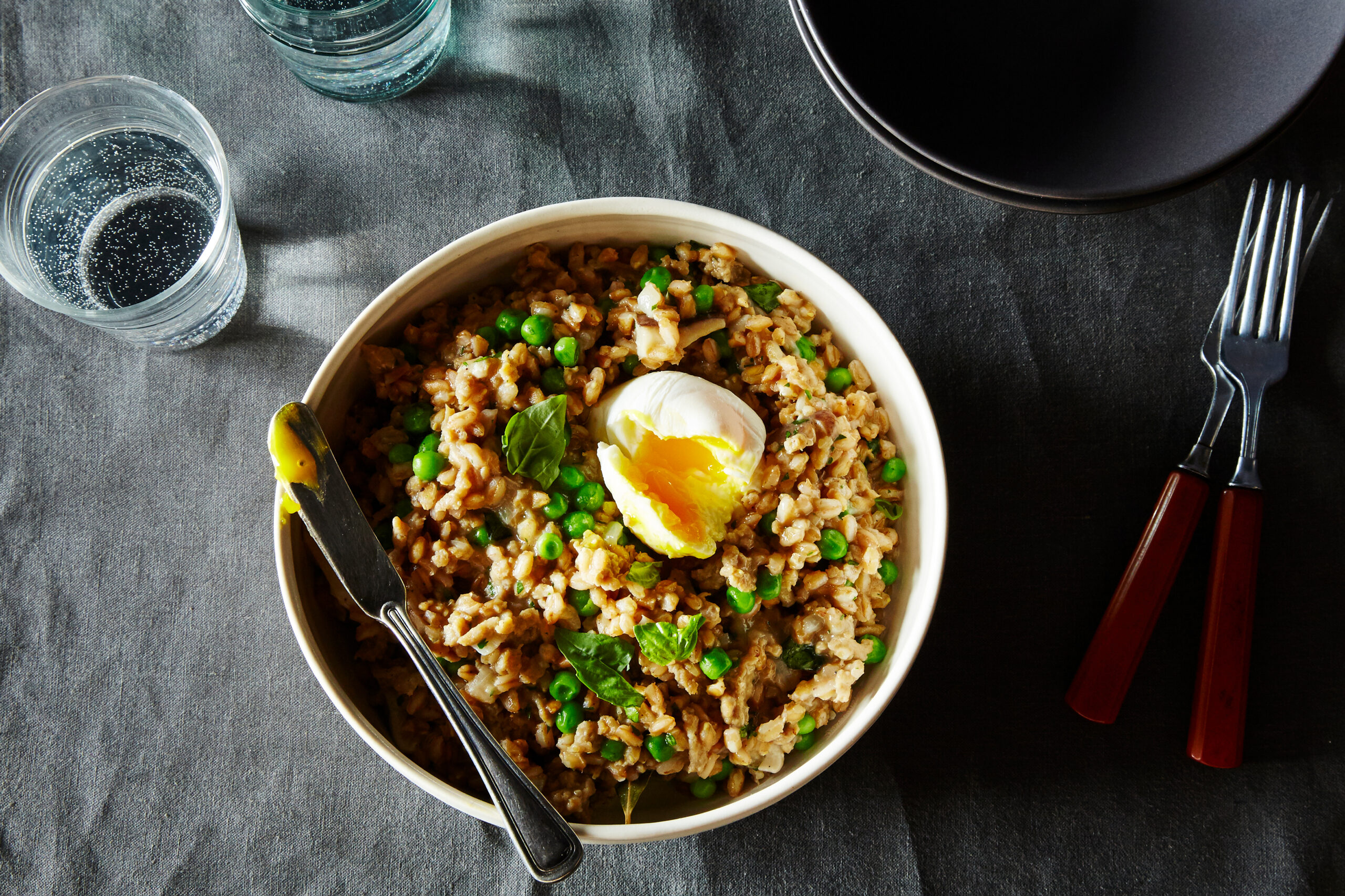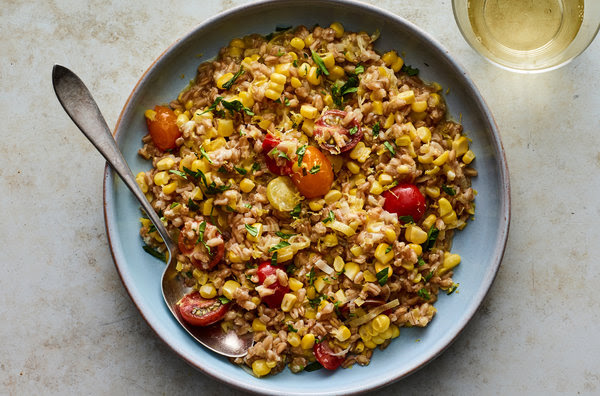

I love this time of year with its abundance of roadside stands just brimming with fresh produce. I picked up some sweet corn and added then to some tomatoes and cilantro growing on my deck. Pared it with the ancient grain, Farro – and came up with this wonderful sumptuous summer dish of Farro Risotto.
Eastern View: Grains like farro help to build bone tissue and muscle and give bodily strength and endurance. Ayurveda recommends having grains at each meal to provide adequate energy for the body. There are a variety of different grains, and each grain has a specific influence on each ayurvedic dosha. Vata and Pitta types can consume high quantities of grains, while Kapha types should have smaller amounts to avoid weight gain.
Wheat products such as farro are the best grains for balancing and nourishing. They help with lubrication, boost energy, and enhance physical strength and endurance. Wheat should be eaten often by people trying to balance Vata. People with a Kapha imbalance should reduce but not totally avoid wheat.
Western View: A very high level of fiber in farro makes it heart-healthy, good for digestion, and beneficial for preventing blood sugar or insulin spikes and dips. One 1/2 cup serving of farro has about seven to eight grams of cholesterol-lowering fiber, which is more than four times the amount in white rice or a slice of white bread!
Given all its fiber, farro is sure to fill you up, since it’s an unprocessed grain — meaning it has an intact bran and germ, the parts of the grain that provide nutrients, protein and fiber, which winds up swelling up in your digestive tract, keeping you satisfied for longer than refined grains.
Farro is beneficial for preventing constipation, clearing the arteries of plaque buildup, curbing hunger pangs, and supporting a healthy gut environment. Farro’s complex carbohydrates break down slowly, keeping your energy levels more stable compared to eating refined grains.
Like other 100 percent whole grains, farro supplies not only high concentrations of dietary fiber, but also resistant starch, oligosaccharides and antioxidants, including phenolic compounds that have been linked to disease prevention. (1) Studies show the more whole grains someone eats, the more protection that person seems to have against chronic diseases like diabetes and cardiovascular disease, in addition to obesity. (2)
Among farro’s different types of carbohydrates is a specific compound called cyanogenic glucosides, which have been shown to positively affect the immune system, lower inflammation, help regulate blood sugar levels, and lower cholesterol.
Farro contains multiple B vitamins, especially vitamin B3 niacin, which is important for metabolic health and breaking down or converting carbohydrates, fats, and proteins from the foods we eat into energy. (3) B vitamins are also important for brain health, maintaining high energy levels, neurotransmitter function, and supporting the central nervous system.
Ingredients
Instructions
There’s no one size fits all for what you should eat. If you would like to talk with me about what is the right diet for you, sign up for a complimentary consultation. Just click on the link to my online calendar to find a good time that works for you.
In health,

The Holistic HIghway integrates traditional Western medical practices with Ayurveda medicine, creating a focus on prevention through nutrition, diet, and exercise; use of the latest genetic testing and other diagnostic techniques; and prescribed combinations of botanical medicines, supplements, therapeutic diets, detoxification programs, or stress-management techniques.

Integrative Health Expert | Ayurveda Practitioner | Author | Speaker
Kerry is a globally recognized leader in integrative medicine and the science of health known as Ayurveda. She is passionate about raising awareness of the need for a change in contemporary medicine that focuses on patient empowerment and a health-based (rather than disease-based) medical system.
Kerry is connected with The University of Pittsburgh Center for Integrative Medicine and remains a pioneer in the field of integrative medicine where she has developed a personalized system to manage chronic disorders by incorporating fundamental changes in diet, behavior, and stress while focusing on genetics.
This individualized program is so successful that many of her clients have achieved maximum healing and vitality after years of chronic problems!
More to Explore
Contact
Disclaimer
The sole purpose of all the website content is to educate and provide information about Integrative Health, Genetics and Ayurveda.This information is not intended for use in the diagnosis, treatment, cure. or prevention of any disease.
Stay Connected